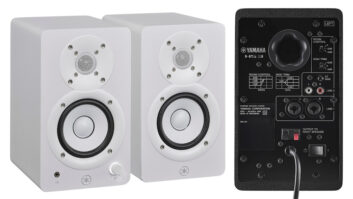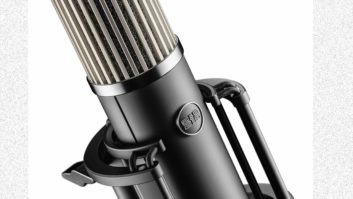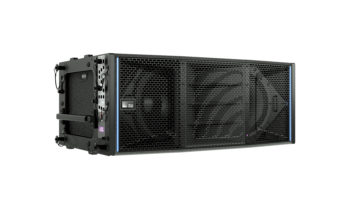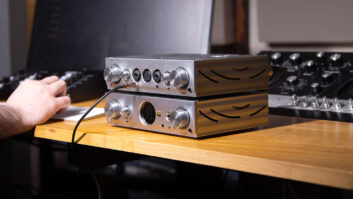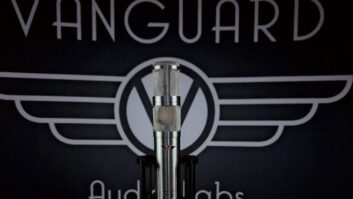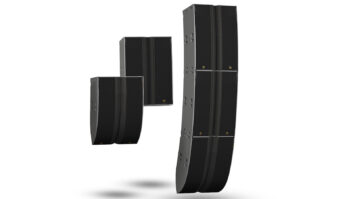I’m a tech-loving geek—my ceiling fan talks to my thermostat and coordinates my house temp. But high-end tech doesn’t need to be that crazy, or expensive. Take digital recording, for example: You can use plug-ins for all kinds of great sounding effects, EQ, compression and more. They are affordable, easy to use and recall, and they dominate processing and composition inside the box.
But new generations of writers, producers and engineers want more, and different. I see it all the time in my teaching gig. The bands that come in want to play live, rarely bringing pre-production tracks made inside a DAW. On the engineering side, students drool over real Fairchilds, 480Ls, 4038s, U 47s, 251s, and the newer high-end originals and emulations of vintage hardware from Manley, Chandler, Mercury, Retro Instruments and others. And while they appreciate the history and love the sonic benefits of all this great gear, few can afford these analog gems.
Enter the new, reasonably priced, and simpler high end—guitar pedals for one, which can easily be integrated into a desktop studio’s workflow. In putting this month’s roundup of guitar pedals together (see p. 50), I found some versatile and sophisticated products. For under $220 you can get the Wampler Faux Tape Echo. It’s an analog signal path with digitally created delays. It’s got all the basics including tap tempo, a LPF to shape the delay tone, and other tweaks named movement and sway that emulates the random modulation you’d get from a tape machine. If that’s not real enough for you, check out the T-Rex Replicator analog tape delay ($899). It’s handmade in Denmark and uses real tape (gasp!) to create its delays. Features include two heads, tap tempo, saturation, feedback, up to 3 seconds of delay and tape modulation (chorus); and it’s powered at 24VDC, which provides more than +20dBu of headroom, in a guitar pedal!
My current favorite distortion pedal is the EarthQuaker Devices Hoof ($165). It offers some excellent controls, including a high/low tilt EQ, mid-band boost and cut, Fuzz boost/cut, and level. And it sounds great pretty much however you set it. It’s just a matter of whether you like the tone for your application. For the price, it’s a must-have if you’re looking for an easy way to bring flavor to a bass, guitar or even a vocal. The Rainbow Machine ($225), also from EarthQuaker, takes you back to a time when sending BGVs or a guitar through a Leslie was cool. You can quickly leave the planet with some of the settings, but with a bit of tweaking, you can get add something beautiful and unique to your tracks. The RM’s controls include Pitch (with an input for an expression pedal), controls for the primary and secondary pitches, lag control between the dry and wet signals, and “Magic,” which is explained in EQ’s literature as “a regeneration control that creates aliasing between a mix of the primary and secondary functions feeding back against each other.”
If you’re looking for 500 Series magic, check out the Eventide DDL 500 ($899). As you’d expect from the company that has dominated studio effects for decades, this unit re-defines the 500 Series delay. I’ve been playing with this one for a while now, and it never fails to impress me. All the sound shaping takes place in the analog domain; the chips are there just for the delay. Features include the basics like tap tempo and feedback, as well as GUI treats like coarse and fine rotary controls (press and turn for coarse), and a remote input so that short delays can be used for filtering and flanging effects. Other goodies include 20dB of boost, soft, analog clipping, HPF, Infinite delay, delay times up to 10 seconds (192 kHz), and 60 seconds (12 kHz), adjustment of delays from note values, and a relay bypass.
Another impressive 500 Series unit that takes it to the next level is the Sonic Farm Silkworm Mic Pre/DI. It sounds great and squeezes a lot into narrow vertical space. You’ve got gain and a ¼-inch input, plus polarity, phantom power, and mic/instrument switches. Add solid-state or transformer drive signal paths, a High, Low and Medium gain switch, Vibe settings that offer smooth, present, or resonant sonic options, and you have a unique preamp that goes where others seldom do. I’ve used the Silkwork on bass, guitar and vocals, and you can get a lot of sonic variances very easily.
So, while I’m writing this, we were having an unusually warm Nashville day in December. My network went down, and my thermostat and fan went offline. To get some fresh air in the house, I just opened the door. High-end tech is great, but sometimes you just need to downscale and get back to the good old/new stuff that works—like all this great and affordable gear that brings new sound tools to musical content creators who are yearning to be unique and break the mold.
